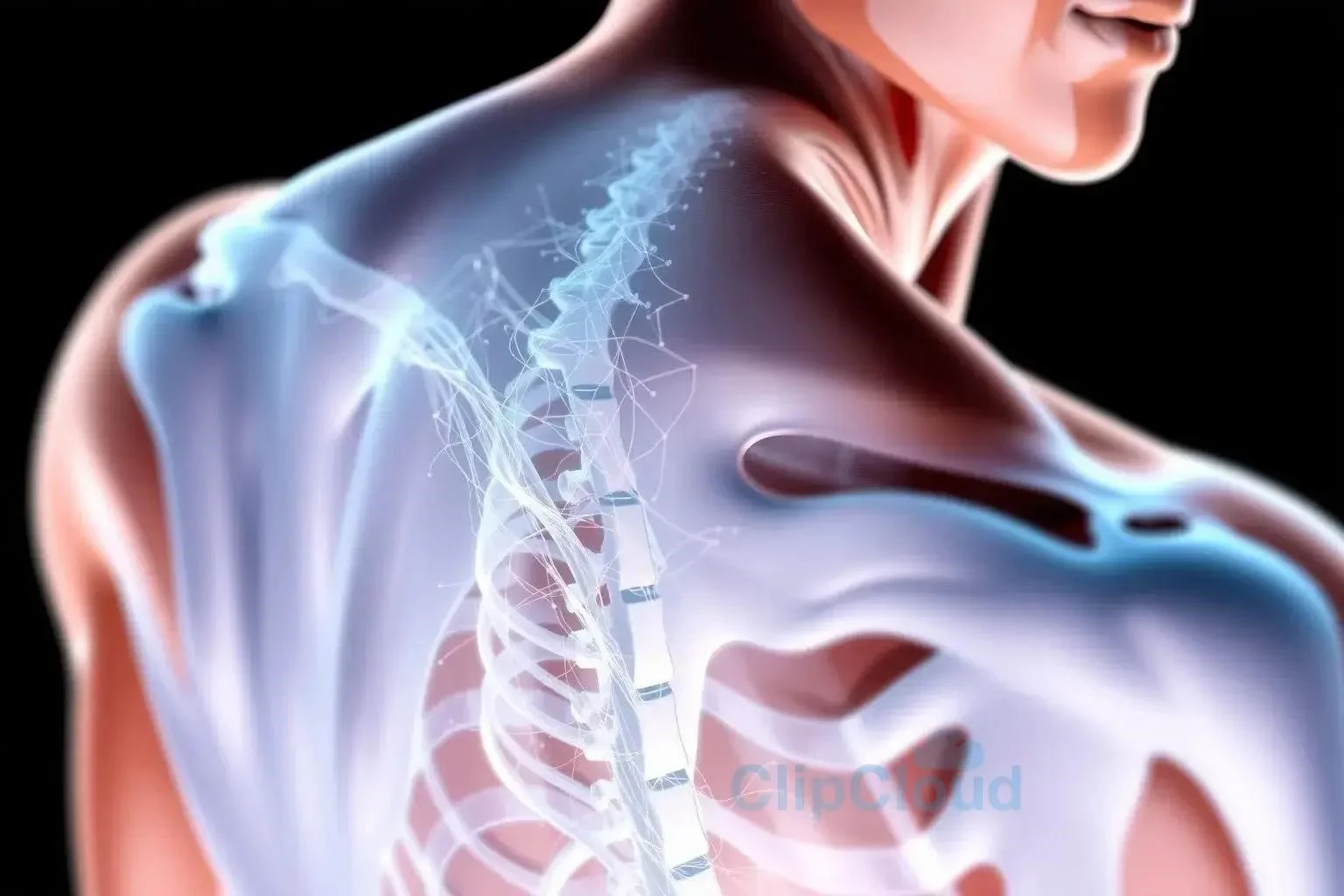Understanding Fascia: More Than Just Wrapping Paper
Imagine a continuous web, a three-dimensional matrix enveloping every muscle fiber, organ, bone, and nerve in your body. That’s fascia. Often overlooked, fascia is far more than just biological “wrapping paper.” This complex network of connective tissue plays a vital role in supporting, connecting, and communicating throughout your entire system. Composed primarily of collagen and elastin fibers suspended in a gel-like substance, fascia provides structure, allows for smooth movement, and acts as a shock absorber;
Fascia’s Role in Movement and Flexibility
Fascia plays a crucial role in facilitating smooth, coordinated movement and maintaining optimal flexibility. Think of it as a network of interconnected pathways that transmit force and allow for effortless gliding between muscles and other tissues. When healthy, fascia is supple and elastic, enabling a wide range of motion and efficient transfer of energy during physical activity. However, several factors can disrupt the smooth functioning of this intricate system.
One key aspect of fascia’s role in movement lies in its ability to transmit force. Muscles don’t work in isolation; they rely on fascial connections to transmit force across the body, creating coordinated and efficient movement patterns. This interconnectedness allows for seamless transitions between movements and helps distribute forces evenly, reducing strain on individual muscles and joints. Imagine throwing a ball: the force generated in your legs is transmitted through your core and ultimately to your arm through the fascial network, enabling a powerful and coordinated throw.
Furthermore, fascia’s elasticity contributes significantly to flexibility. The elastin fibers within fascia allow it to stretch and recoil, enabling a wide range of motion in joints and muscles. This elasticity is essential for activities requiring bending, twisting, and reaching. Picture a gymnast performing a backbend: the elasticity of their fascia allows for the extreme range of motion required without tearing or damaging the surrounding tissues.
Maintaining optimal hydration is crucial for healthy fascial function. Fascia is largely composed of water, and dehydration can lead to stiffness and reduced mobility. Adequate hydration ensures the fascia remains supple and elastic, supporting smooth movement and flexibility. Think of a sponge: when dry, it’s rigid and brittle, but when hydrated, it becomes soft and pliable. Similarly, well-hydrated fascia allows for optimal movement and flexibility.
Movement itself also plays a vital role in maintaining fascial health. Regular physical activity promotes blood flow and nutrient delivery to the fascia, keeping it supple and preventing adhesions. Conversely, prolonged periods of immobility or repetitive movements can lead to fascial restrictions, reducing flexibility and potentially contributing to pain. Imagine a garden hose that’s been left kinked for too long: the flow of water is restricted. Similarly, lack of movement can lead to restrictions in the fascia, hindering its ability to support healthy movement.
Fascial Restrictions and Their Link to Pain
When fascia loses its suppleness and elasticity, it can lead to restrictions, often described as “adhesions” or “knots.” These restrictions can significantly impact movement and contribute to various types of pain. Imagine a tangled fishing net: the knots and tangles restrict its flexibility and ability to function smoothly. Similarly, fascial restrictions can hinder movement, causing stiffness, discomfort, and even chronic pain.
Several factors can contribute to the development of fascial restrictions. Physical trauma, such as injuries or surgeries, can cause scar tissue formation within the fascia, leading to adhesions and reduced mobility. Repetitive movements, common in many occupations and sports, can also create micro-tears and inflammation in the fascia, eventually leading to restrictions. Poor posture, prolonged periods of immobility, and even emotional stress can contribute to fascial tension and stiffness.
The pain associated with fascial restrictions can manifest in various ways. It can be localized to a specific area, such as a stiff neck or tight lower back, or it can be more diffuse and widespread, affecting multiple areas of the body. Fascial pain is often described as a dull ache, tightness, or a sense of restriction. It can also be sharp and stabbing, especially with movement. Because fascia is interconnected throughout the body, restrictions in one area can often cause pain in seemingly unrelated areas. This phenomenon is known as referred pain.
Furthermore, fascial restrictions can impact other bodily systems. Because fascia surrounds and supports nerves and blood vessels, restrictions can compress these structures, leading to numbness, tingling, or circulatory problems. This compression can further exacerbate pain and contribute to other health issues. Imagine a kinked garden hose: the flow of water is restricted. Similarly, fascial restrictions can impede the flow of blood and nerve signals, contributing to a range of symptoms.
Understanding the link between fascial restrictions and pain is crucial for effective treatment. Traditional approaches often focus solely on addressing the symptoms of pain without considering the underlying fascial restrictions. However, by targeting the fascia directly through manual therapies or movement practices, it’s possible to release restrictions, restore mobility, and alleviate pain; Think of untangling a knotted rope: by carefully working through the knots, you can restore its length and flexibility. Similarly, releasing fascial restrictions can restore healthy movement patterns and reduce pain.
Restoring Fascial Health: Techniques for Improved Flexibility and Pain Management
Fortunately, several techniques can help restore fascial health, improve flexibility, and manage pain. These techniques aim to release restrictions, improve hydration, and promote overall fascial mobility. By incorporating these practices into your routine, you can support your body’s natural healing processes and experience greater freedom of movement.
Myofascial release therapy, a specialized form of manual therapy, targets fascial restrictions directly. Trained therapists use gentle, sustained pressure to release adhesions and restore fascial glide. This technique can be highly effective in alleviating pain and improving mobility. Imagine smoothing out wrinkles in a piece of fabric: myofascial release helps to smooth out the fascia, restoring its suppleness and elasticity.
Movement practices, such as yoga, Pilates, and Tai Chi, are also beneficial for fascial health. These disciplines emphasize slow, controlled movements that lengthen and stretch the fascia, promoting hydration and improving flexibility. The mindful nature of these practices also helps to reduce stress, which can contribute to fascial tension. Think of gently stretching a rubber band: these movements help to lengthen and release tension in the fascia.
Self-myofascial release techniques, using tools like foam rollers and massage balls, offer a convenient and accessible way to address fascial restrictions at home. By applying pressure to specific areas, you can release tightness and improve mobility. Imagine rolling out dough: these tools help to smooth out and release tension in the fascia.
Staying hydrated is crucial for maintaining fascial health. Adequate water intake ensures the fascia remains supple and lubricated, supporting smooth movement and reducing the risk of restrictions. Think of a sponge: when hydrated, it’s soft and pliable. Similarly, well-hydrated fascia allows for optimal movement and flexibility.
Stretching is another essential component of maintaining fascial health. Regular stretching helps to lengthen and maintain the elasticity of the fascia, preventing restrictions and improving flexibility. Incorporate dynamic stretches, which involve movement, and static stretches, which involve holding a position, into your routine. Think of stretching a rubber band: regular stretching helps to maintain the fascia’s elasticity and prevent it from becoming tight and restricted.
Finally, prioritizing proper posture and ergonomics can significantly impact fascial health. Maintaining good posture throughout the day reduces strain on the fascia and prevents the development of restrictions. Similarly, ergonomic adjustments to your workspace can minimize repetitive movements and promote healthy fascial alignment. Imagine a well-aligned building: proper posture and ergonomics support the structural integrity of the fascia.
By incorporating these techniques into your lifestyle, you can proactively address fascial restrictions, improve flexibility, manage pain, and enhance overall well-being. Remember that consistency is key: regular practice and mindful attention to your body’s needs will yield the greatest benefits.





